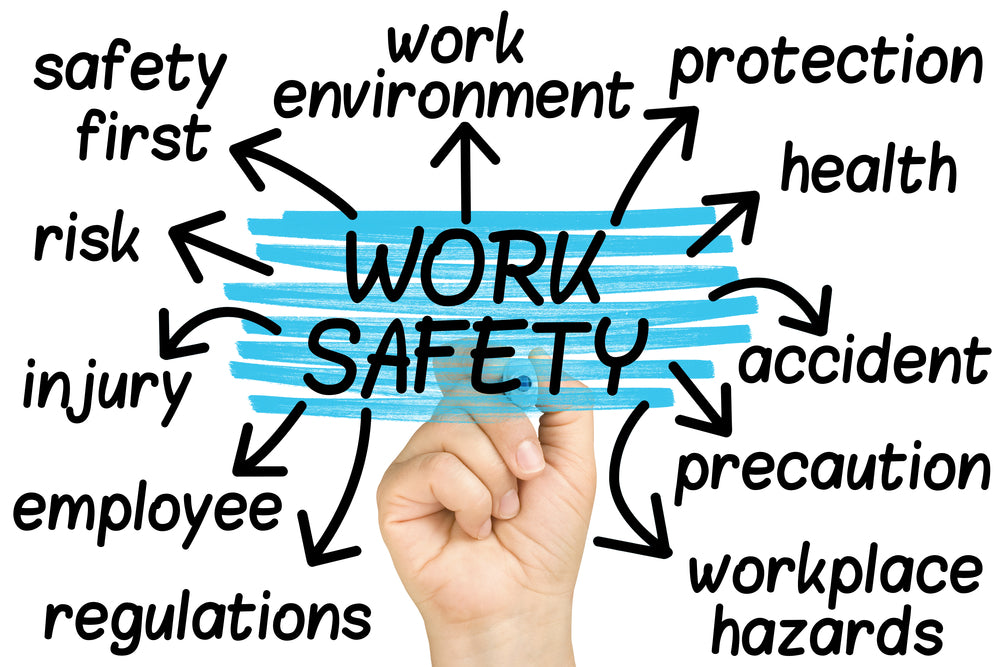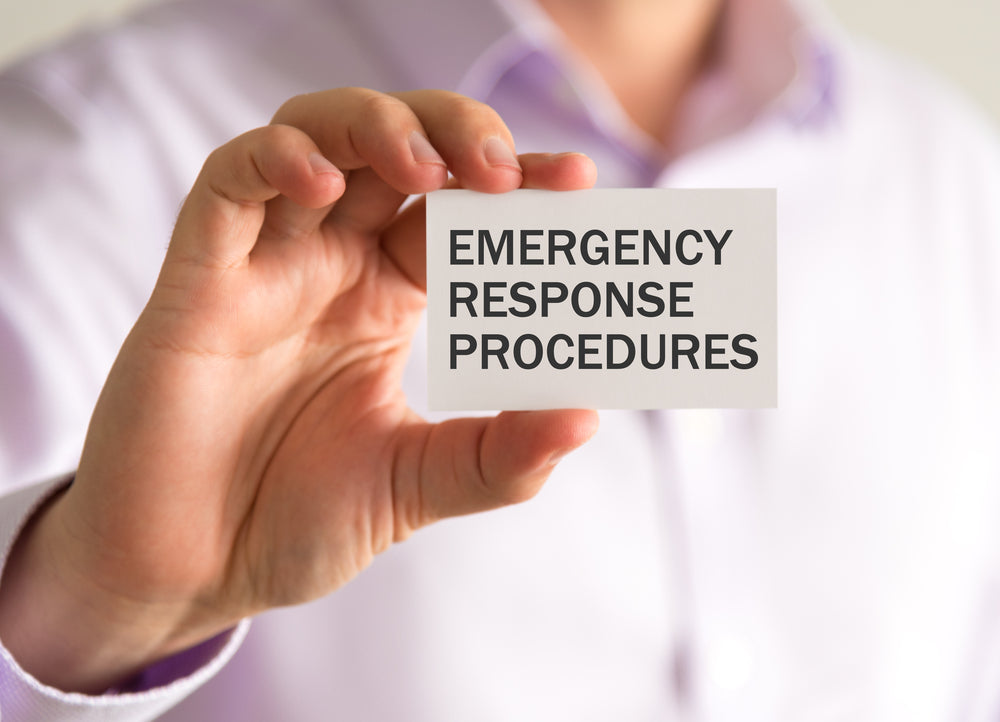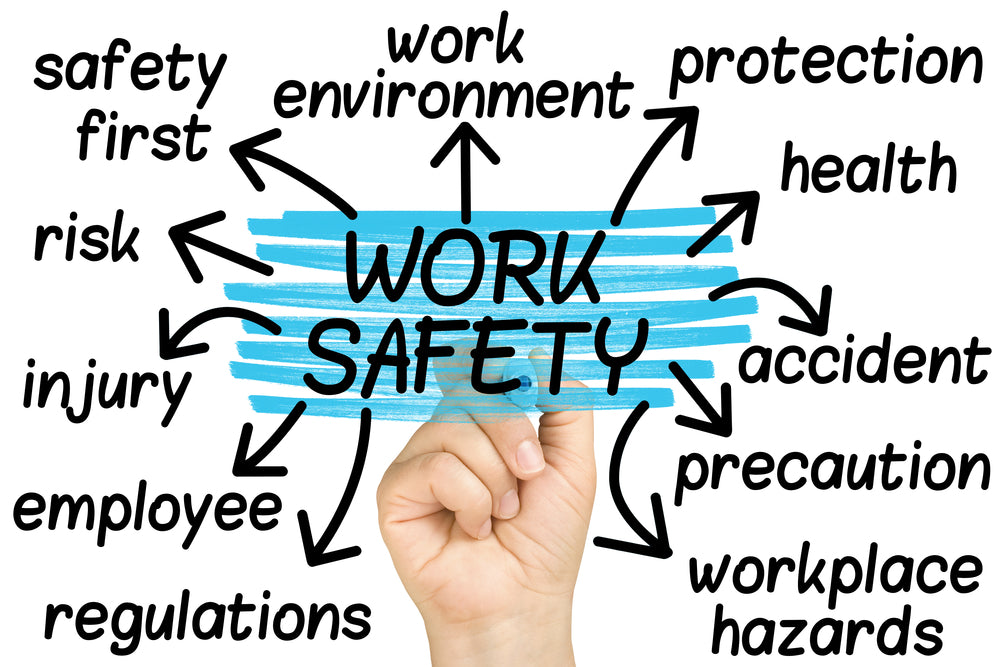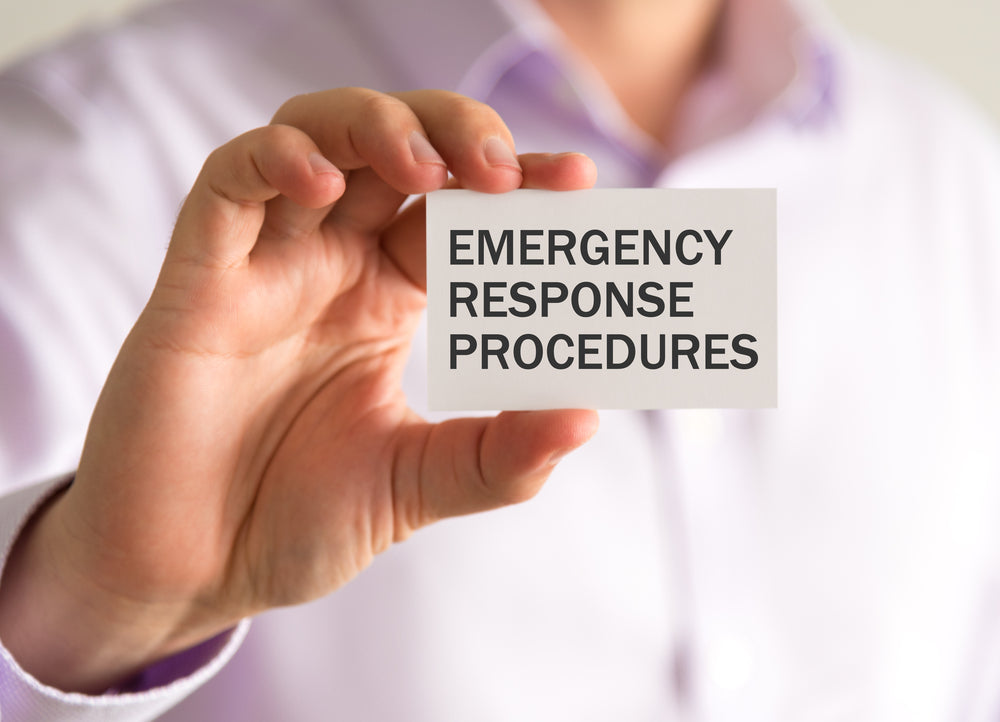Incident reporting

Incident reporting
How to report incidents in your workplace
Organisations need to have a clear process for incident reporting in order to ensure that any incidents that occur are dealt with in a timely and effective manner. Incident reporting is important for a number of reasons, including:
- It allows organisations to track incidents and identify any patterns that may be emerging.
- It ensures that appropriate action can be taken in response to incidents, such as investigating what went wrong and taking steps to prevent similar incidents from happening in the future.
- It can provide valuable information for risk assessments and help to generate awareness of potential risks.
- It can help to improve the safety of an organisation by ensuring that incidents are dealt with promptly and effectively.
If something happens at your workplace and someone gets hurt, your first priority should be to help them and make sure the area is safe. This might involve:
- cleaning up the hazardous area
- providing first aid to the injured person
- calling an ambulance if necessary.
About this course
- Training Provider: OHS.com.au with AlertForce (RTO Code 91826)
- Location: Online
- Course length: Approx. 4 hours
- Time: Self-paced
- Certification / Accreditation: Certificate of Completion*
- CPD Points: Yes. 4 points as certificate of completion
Background – Reporting an incident in a work place
You may not be able to prevent accidents from happening at work but, if they do happen, you must handle them in a manner that satisfies your obligations.
If it is a serious incident, as well as calling the emergency services, you should notify the health and safety authority in your State or Territory immediately, in accordance with the relevant Workplace Health and Safety Legislation.
It is generally required that an incident report form is completed for every workplace accident, no matter how minor, and that a record of every workplace accident is kept (called a ‘Register of Injuries’ in NSW). At a minimum, this information must be readily available at all times, and each report should contain the following:
- Name of injured worker/s
- Worker’s occupation or job title at the time of the injury
- Worker’s age at the time of the injury
- Time and date of injury
- The nature of the industry in which the injury was sustained
- Exact location of the worker at the time of injury
- Exact description of how the injury was sustained (cause)
If you are injured at work, you must complete an incident report. This includes anyone who is a direct worker, agency employee, contractor, customer or visitor. If you are noted on the register of injuries, this also counts as an incident report.
It is important to store personal data carefully, in line with privacy, and health and safety legislation. This is to protect the people involved in the incident, as well as to prevent further accidents from happening.
You must also review the incident to find out whether there are steps you could take to stop it from happening again. A serious injury, or risk to plant and equipment, will need a more in-depth health and safety investigation.
Course outline
Alertforce’s Incident Reporting training course covers the Incident & Hazard module, from navigation, logging and managing incidents and hazards to analysis. A hands-on approach is taken, and the exercises are designed to impart relevant skills and knowledge by having participants work through real-life examples and report templates.
This course is designed for employees who will be reporting incidents or hazards, and supervisors who are tasked with managing the reported incident and hazards. By the end of the course, participants will have a good understanding of how to properly report and manage incidents and hazards.
Learning form
All Incident Reporting course participants are encouraged to watch the videos and engage in group discussions after each video is finished. Facilitators and participants can review the key points from each video and module using the provided support material.
There are many ways to view and participate in discussions.
- E-learning Format
- Face-to face safety meetings
- Forum
Participants can upload the training videos to e-learning and view them online. Participants can review the support material online and answer any questions.
Face-to-face safety meetings allow participants to watch videos and participate in discussions. Face-to-face meetings allow for greater interaction and engagement, but can be logistically challenging.
You can also upload the videos to a forum. Participants can access the videos and other support materials via a private forum, company website, or by uploading them to a forum. Each module contains the answers to your questions.
You can also complete the course via email. Participants can email their answers to the discussion questions once they have watched the videos.
No matter how the material is delivered, all participants should have access to it. The support material includes discussion questions as well as the video script. Participants can use the questions to explore the effects of safety practices on their organization.
The modules also include scripts and reference materials. These materials allow participants to review and research the key points of the lesson.
Facilitators and participants can use the video scripts and questions to help them create an action plan. Participants can take specific steps and make suggestions to use the plan in their work environment.
SKU:
Course Highlights:
- On-demand Training
- Complete on Any Device
- Quality Focused
- Fast Certification
- Tax Deductable
- 100% Online
- 24 Months Unlimited Course Access
- Self-print Certificate
Couldn't load pickup availability

"Very detailed information, with the ability to shuffle and skip past parts that I knew. I actually enjoyed doing it. I was refreshed after completing the course. All in all, a fantastic refresher course."
Luke W."Straight forward and easy to understand. Thanks, OHS this is my second Refresher course."
Anonymous"Quick & relatively easy, done from the comfort of home."
David B"Really great courses on OHS website, would use this site again."
RhysADDITIONAL EXTRA BONUSES with OHS.com.au
Claim up to $1271.95 worth of Extra Bonuses
with every purchase
- Your personal copy of Safety Legends E-Book (value $39.95)
- $100 off your first case from Naked Wines (value $100)
- Upto 350,000 Bonus AMEX Frequent Flyer points* (value $1000)
- Complimentary Access to two online courses** (value $132)
$1271.95 EXTRA VALUE - JUST FOR YOU INSIDE!
* New customers when you successfully sign up for a new personal / business credit card ** Indigenous Cultural Awareness / Impacts of Climate Change coursesDescription
How to report incidents in your workplace
Organisations need to have a clear process for incident reporting in order to ensure that any incidents that occur are dealt with in a timely and effective manner. Incident reporting is important for a number of reasons, including:
- It allows organisations to track incidents and identify any patterns that may be emerging.
- It ensures that appropriate action can be taken in response to incidents, such as investigating what went wrong and taking steps to prevent similar incidents from happening in the future.
- It can provide valuable information for risk assessments and help to generate awareness of potential risks.
- It can help to improve the safety of an organisation by ensuring that incidents are dealt with promptly and effectively.
If something happens at your workplace and someone gets hurt, your first priority should be to help them and make sure the area is safe. This might involve:
- cleaning up the hazardous area
- providing first aid to the injured person
- calling an ambulance if necessary.
About this course
- Training Provider: OHS.com.au with AlertForce (RTO Code 91826)
- Location: Online
- Course length: Approx. 4 hours
- Time: Self-paced
- Certification / Accreditation: Certificate of Completion*
- CPD Points: Yes. 4 points as certificate of completion
Background – Reporting an incident in a work place
You may not be able to prevent accidents from happening at work but, if they do happen, you must handle them in a manner that satisfies your obligations.
If it is a serious incident, as well as calling the emergency services, you should notify the health and safety authority in your State or Territory immediately, in accordance with the relevant Workplace Health and Safety Legislation.
It is generally required that an incident report form is completed for every workplace accident, no matter how minor, and that a record of every workplace accident is kept (called a ‘Register of Injuries’ in NSW). At a minimum, this information must be readily available at all times, and each report should contain the following:
- Name of injured worker/s
- Worker’s occupation or job title at the time of the injury
- Worker’s age at the time of the injury
- Time and date of injury
- The nature of the industry in which the injury was sustained
- Exact location of the worker at the time of injury
- Exact description of how the injury was sustained (cause)
If you are injured at work, you must complete an incident report. This includes anyone who is a direct worker, agency employee, contractor, customer or visitor. If you are noted on the register of injuries, this also counts as an incident report.
It is important to store personal data carefully, in line with privacy, and health and safety legislation. This is to protect the people involved in the incident, as well as to prevent further accidents from happening.
You must also review the incident to find out whether there are steps you could take to stop it from happening again. A serious injury, or risk to plant and equipment, will need a more in-depth health and safety investigation.
Course outline
Alertforce’s Incident Reporting training course covers the Incident & Hazard module, from navigation, logging and managing incidents and hazards to analysis. A hands-on approach is taken, and the exercises are designed to impart relevant skills and knowledge by having participants work through real-life examples and report templates.
This course is designed for employees who will be reporting incidents or hazards, and supervisors who are tasked with managing the reported incident and hazards. By the end of the course, participants will have a good understanding of how to properly report and manage incidents and hazards.
Learning form
All Incident Reporting course participants are encouraged to watch the videos and engage in group discussions after each video is finished. Facilitators and participants can review the key points from each video and module using the provided support material.
There are many ways to view and participate in discussions.
- E-learning Format
- Face-to face safety meetings
- Forum
Participants can upload the training videos to e-learning and view them online. Participants can review the support material online and answer any questions.
Face-to-face safety meetings allow participants to watch videos and participate in discussions. Face-to-face meetings allow for greater interaction and engagement, but can be logistically challenging.
You can also upload the videos to a forum. Participants can access the videos and other support materials via a private forum, company website, or by uploading them to a forum. Each module contains the answers to your questions.
You can also complete the course via email. Participants can email their answers to the discussion questions once they have watched the videos.
No matter how the material is delivered, all participants should have access to it. The support material includes discussion questions as well as the video script. Participants can use the questions to explore the effects of safety practices on their organization.
The modules also include scripts and reference materials. These materials allow participants to review and research the key points of the lesson.
Facilitators and participants can use the video scripts and questions to help them create an action plan. Participants can take specific steps and make suggestions to use the plan in their work environment.
- Money Back Guarantee
- Save Time & Money
- Tax Deductible
- 1000's Trained Each Month
- Quality-Focused
- Peer Reviewed Courses
- Trusted Industry Partner
- Fast Certification
- 60 Day Guarantee
- *See refund policy


Got multiple people needing to do a course? We will get back to you within a day!
Student Reviews

Couldn't load pickup availability

Contact Us!
Contact form
ADDITIONAL EXTRA BONUSES with OHS.com.au
Claim up to $1271.95 worth of Extra Bonuses
with every purchase
- Your personal copy of Safety Legends E-Book (value $39.95)
- $100 off your first case from Naked Wines (value $100)
- Upto 350,000 Bonus AMEX Frequent Flyer points* (value $1000)
- Complimentary Access to two online courses** (value $132)
$1271.95 EXTRA VALUE - JUST FOR YOU INSIDE!
* New customers when you successfully sign up for a new personal / business credit card ** Indigenous Cultural Awareness / Impacts of Climate Change coursesDescription
How to report incidents in your workplace
Organisations need to have a clear process for incident reporting in order to ensure that any incidents that occur are dealt with in a timely and effective manner. Incident reporting is important for a number of reasons, including:
- It allows organisations to track incidents and identify any patterns that may be emerging.
- It ensures that appropriate action can be taken in response to incidents, such as investigating what went wrong and taking steps to prevent similar incidents from happening in the future.
- It can provide valuable information for risk assessments and help to generate awareness of potential risks.
- It can help to improve the safety of an organisation by ensuring that incidents are dealt with promptly and effectively.
If something happens at your workplace and someone gets hurt, your first priority should be to help them and make sure the area is safe. This might involve:
- cleaning up the hazardous area
- providing first aid to the injured person
- calling an ambulance if necessary.
About this course
- Training Provider: OHS.com.au with AlertForce (RTO Code 91826)
- Location: Online
- Course length: Approx. 4 hours
- Time: Self-paced
- Certification / Accreditation: Certificate of Completion*
- CPD Points: Yes. 4 points as certificate of completion
Background – Reporting an incident in a work place
You may not be able to prevent accidents from happening at work but, if they do happen, you must handle them in a manner that satisfies your obligations.
If it is a serious incident, as well as calling the emergency services, you should notify the health and safety authority in your State or Territory immediately, in accordance with the relevant Workplace Health and Safety Legislation.
It is generally required that an incident report form is completed for every workplace accident, no matter how minor, and that a record of every workplace accident is kept (called a ‘Register of Injuries’ in NSW). At a minimum, this information must be readily available at all times, and each report should contain the following:
- Name of injured worker/s
- Worker’s occupation or job title at the time of the injury
- Worker’s age at the time of the injury
- Time and date of injury
- The nature of the industry in which the injury was sustained
- Exact location of the worker at the time of injury
- Exact description of how the injury was sustained (cause)
If you are injured at work, you must complete an incident report. This includes anyone who is a direct worker, agency employee, contractor, customer or visitor. If you are noted on the register of injuries, this also counts as an incident report.
It is important to store personal data carefully, in line with privacy, and health and safety legislation. This is to protect the people involved in the incident, as well as to prevent further accidents from happening.
You must also review the incident to find out whether there are steps you could take to stop it from happening again. A serious injury, or risk to plant and equipment, will need a more in-depth health and safety investigation.
Course outline
Alertforce’s Incident Reporting training course covers the Incident & Hazard module, from navigation, logging and managing incidents and hazards to analysis. A hands-on approach is taken, and the exercises are designed to impart relevant skills and knowledge by having participants work through real-life examples and report templates.
This course is designed for employees who will be reporting incidents or hazards, and supervisors who are tasked with managing the reported incident and hazards. By the end of the course, participants will have a good understanding of how to properly report and manage incidents and hazards.
Learning form
All Incident Reporting course participants are encouraged to watch the videos and engage in group discussions after each video is finished. Facilitators and participants can review the key points from each video and module using the provided support material.
There are many ways to view and participate in discussions.
- E-learning Format
- Face-to face safety meetings
- Forum
Participants can upload the training videos to e-learning and view them online. Participants can review the support material online and answer any questions.
Face-to-face safety meetings allow participants to watch videos and participate in discussions. Face-to-face meetings allow for greater interaction and engagement, but can be logistically challenging.
You can also upload the videos to a forum. Participants can access the videos and other support materials via a private forum, company website, or by uploading them to a forum. Each module contains the answers to your questions.
You can also complete the course via email. Participants can email their answers to the discussion questions once they have watched the videos.
No matter how the material is delivered, all participants should have access to it. The support material includes discussion questions as well as the video script. Participants can use the questions to explore the effects of safety practices on their organization.
The modules also include scripts and reference materials. These materials allow participants to review and research the key points of the lesson.
Facilitators and participants can use the video scripts and questions to help them create an action plan. Participants can take specific steps and make suggestions to use the plan in their work environment.
- Money Back Guarantee
- Save Time & Money
- Tax Deductible
- 1000's Trained Each Month
- Quality-Focused
- Peer Reviewed Courses
- Trusted Industry Partner
- Fast Certification
- 60 Day Guarantee
- *See refund policy
Student Reviews

Course Highlights:
- On-demand Training
- Complete on Any Device
- Quality Focused
- Fast Certification
- Tax Deductable
- 100% Online
- 24 Months Unlimited Course Access
- Self-print Certificate
Couldn't load pickup availability

"Very detailed information, with the ability to shuffle and skip past parts that I knew. I actually enjoyed doing it. I was refreshed after completing the course. All in all, a fantastic refresher course."
Luke W."Straight forward and easy to understand. Thanks, OHS this is my second Refresher course."
Anonymous"Quick & relatively easy, done from the comfort of home."
David B"Really great courses on OHS website, would use this site again."
Rhys



Are you from a large organisation? Contact us for a group quote!
 Checkout securely with
Checkout securely with
OHS has been in the training industry since 1999, providing practical and effective health and safety training courses online. We aim to provide online refreshers that integrate effortlessly into our clients' hectic schedules, keeping them updated on the latest industry standards.
Courses such as NDIS Training, Staff Training, VOCs/High Risk Refreshers and Safety Training make career advancement both affordable and straightforward, ensuring no one misses out on professional development. With us, you won't have to keep searching for terms like 'First Aid Training Southport', 'Hr And Training' or 'First Aid Training Launceston'; we've got your training needs covered.
Whether you choose to purchase individual courses or opt for our comprehensive yearly subscription, we've made professional development flexible and easy, so you won't have to keep looking up terms like 'free online courses australia', 'fatigue management course' or 'elearning victoria'. Buy a course or make an enquiry now because at OHS, our adaptable subscription plans and single course options simplify professional development.
 1300 307 445
1300 307 445



 Download Course PDF Here
Download Course PDF Here